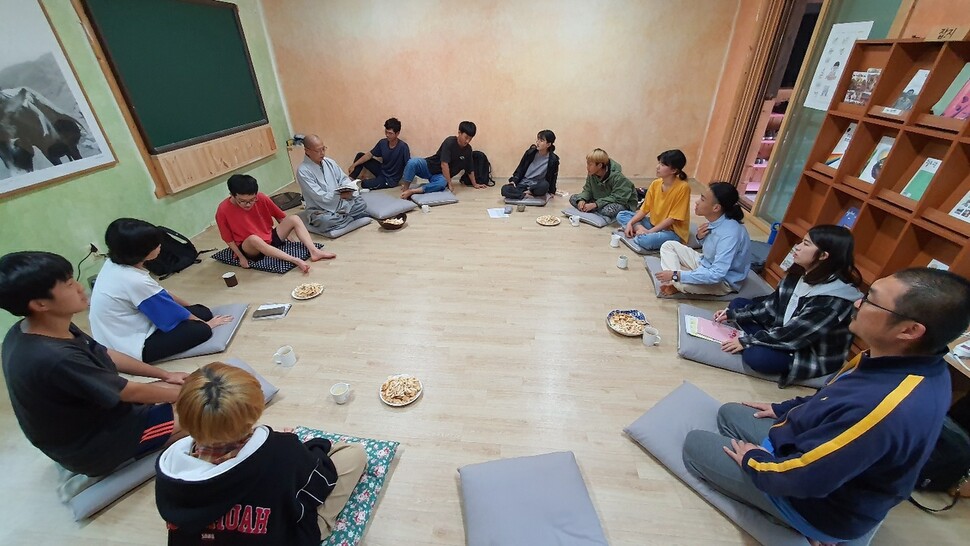
Follow the Author

Nijay K. Gupta
+ Follow
Paul and the Language of Faith Kindle Edition
by Nijay K. Gupta (Author), James D. G. Dunn (Foreword) Format: Kindle Edition
Kindle
from AUD 26.86Read with Our Free App
Paperback
AUD 42.49
5 Used from AUD 36.177 New from AUD 39.00
A dynamic reading of Paul’s faith language, outlining its subtle nuances as belief, trust, and faithfulness.
Faith language permeates the letters of Paul. Yet, its exact meaning is not always clear. Many today, reflecting centuries of interpretation, consider belief in Jesus to be a passive act. In this important book, Nijay Gupta challenges common assumptions in the interpretation of Paul and calls for a reexamination of Paul’s faith language. Gupta argues that Paul’s faith language resonates with a Jewish understanding of covenant involving goodwill, trust, and expectation. Paul’s understanding of faith involves the transformation of one’s perception of God and the world through Christ, relational dependence on Christ, as well as active loyalty to Christ. Pastors and scholars alike will benefit from this close examination of Paul’s understanding and use of faith language. For Gupta, Paul’s understanding involves a divine-human relationship centered on Christ that believes, trusts, and obeys.
240 pages
Next page
Editorial Reviews
About the Author
James D. G. Dunn (1939–2020) was a renowned New Testament scholar and the longtime Lightfoot Professor of Divinity at Durham University. His numerous books include The Theology of Paul the Apostle, Jesus according to the New Testament, and the magisterial Christianity in the Making trilogy.--This text refers to the paperback edition.
Review
Michael F. Bird
— Ridley College
“Nijay Gupta presents here the best contemporary exploration of the meaning of ‘faith’ and ‘believing’ in the Christian Bible. He leaves no stone unturned as he covers topics like faith as doctrine, virtue, allegiance, trust, obedience, and fidelity, among other things. Along the way Gupta cracks open a few hoary chestnuts like the ‘faithfulness of Christ’ and faith as a social boundary marker, always with clarity and acumen. All in all, a wonderful exposition of the meaning of faith in the biblical world.”
Matthew V. Novenson
— University of Edinburgh
“Nijay Gupta has again proved himself to be one of the best and most interesting young exegetes now working. In this impressive book, he gives us, among other things: an up-to-date, incisive treatment of the pistis christou debate; an argument for ‘covenantal pistism’ as a gloss for Paul’s pattern of religion; and a bridge from the classic interpretations of Luther and Calvin to recent proposals from Benjamin Schliesser, Teresa Morgan, and others. Throughout, Gupta writes with a historical critic’s keen eye for textual detail and a theologian’s sense of the considerable stakes of these discussions. Paul and the Language of Faith is a reliable guide for students and a valuable resource for scholars.”
James D. G. Dunn
— from the foreword
“A clear discussion of the biblical, particularly Pauline concept of faith, its breadth and its specifics. Reading it with care will strengthen and perhaps correct the reader’s understanding of faith. Who could ask for more?” --This text refers to the paperback edition.
Product details
ASIN : B091L31CZ8
Publisher : Eerdmans (February 4, 2020)
Publication date : February 4, 2020
Language : English
File size : 2062 KB
Text-to-Speech : Enabled
Screen Reader : Supported
Enhanced typesetting : Enabled
X-Ray : Not Enabled
Word Wise : Not Enabled
Print length : 240 pages
Lending : Not Enabled
Best Sellers Rank: #627,717 in Kindle Store (See Top 100 in Kindle Store)
#280 in Paul's Letters (Kindle Store)
#339 in Christian Hermeneutics
#459 in Christian New Testament Criticism
Customer Reviews:
4.9 out of 5 stars 26 ratings
Videos
Help others learn more about this product by uploading a video!Upload video
About the author
Follow authors to get new release updates, plus improved recommendations.

Follow
Nijay K. Gupta
Nijay K. Gupta serves as associate professor of New Testament at Portland Seminary (George Fox University, Oregon).
He has written several books including: Worship That Makes Sense to Paul (Walter de Gruyter, 2010), Prepare, Succeed, Advance: A Guidebook for Getting a PhD in Biblical Studies and Beyond (Wipf & Stock, 2011), Colossians (Smyth & Helwys, 2013), 1-2 Thessalonians (Cascade, 2016), and The Lord's Prayer (Smyth & Helwys, 2018). He has also written numerous academic articles for journals such as Journal for the Study of the New Testament and The Catholic Biblical Quarterly. Gupta is a member of the Studiorum Novi Testamenti Societas and serves on the boards of Ex Auditu, Journal for the Study of Paul and His Letters, and the monograph series Biblical Interpretation (Brill). He is co-editor of the planned second edition of the Dictionary of Paul and His Letters (InterVarsity Press).
Please visit his blog: www.cruxsolablog.com
Customer reviews
4.9 out of 5 stars
Top reviews from the United States
W.B. Bowes
5.0 out of 5 stars Excellent study on an important concept!Reviewed in the United States on July 25, 2020
Verified Purchase
Nijay Gupta is a prolific writer, and this is another helpful resource to add to the list that he has produced. It follows the trend in recent scholarship (perhaps best exemplified in Theresa Morgan's 'Roman Faith and Christian Faith' of a few years ago) to view the term and concept of "faith" differently.
That is, Gupta argues that
faith simply cannot be reduced to a notion of intellectual assent,
but exists on a spectrum of various different meanings as informed by the Jewish and Greco-Roman ideas of it in Paul's first-century milieu.
The book goes through several of Paul's letters, noting how nuances and complexities in Paul's use of faith-language significantly impact the theological conclusions we take from his work. Overall, it was an excellent, well-researched study - and strikes a balance between readable and technical. I recommend it.
2 people found this helpful
HelpfulReport abuse

Antwan
5.0 out of 5 stars Understanding the usage of the language faith in its Biblical context is simply put, a must know.Reviewed in the United States on March 24, 2020
Verified Purchase
A very well written book that has tremendous scholarship available for people of various levels of biblical understanding. However, written in such a way that anyone who thirsts for a better understanding of the faith language in the New Testament will benefit. I appreciated how Dr. Gupta showed with mastery the complexity and usage of πίστις in this much-needed work.
HelpfulReport abuse

Kindle Customer
5.0 out of 5 stars Faith Is Not BlindReviewed in the United States on March 5, 2020
Just go online to any atheist community or atheist-Christian debate and watch what is said about faith. Faith is believing without evidence. Faith is saying things you know aren’t true. When I meet these people, I ask them about the word pistis in the New Testament, which is commonly translated faith, though not always, and ask if they have any evidence for their claim that that is how pistis was understood.
Oddly enough, they have none.
I guess they believe without evidence.
So when I saw that a New Testament scholar had published a book on pistis like this, I had to get it immediately. Gupta decided to do his research after hearing students in his seminary even speak the same way. I have heard this happen before remembering one Christian responding to an atheist he couldn’t answer by saying “I have faith!”
Gupta mainly wants to focus on how faith is used in the Pauline literature, but he does explore how it is used in literature outside of the New Testament for that. The findings are entirely consistent with my own research over the years. Faith generally refers to loyalty. It is an essential that holds society together. One is expected to have good faith when making contracts and covenants. Faith refers to the reliability of something.
Faith is also an action that one does. If you have faith, you will perform in such and such a way depending on the referent of said faith. An easy-believism would not have made any sense to Paul or anyone in the ancient world. If you believe that Jesus is Lord in the true sense of faith, you should live accordingly. Yes. Even the demons in James do that. They live consistently in trembling knowing judgment is coming.
So it is in Scripture that faith is not just signing a doctrinal statement. It is saying that you are loyal to King Jesus. Now to be sure, sometimes, faith can be used in a different sense. It can be used to describe the content of what one believes, such as one who keeps the faith, but that can just as well mean that such a person has remained loyal to King Jesus.
There is a section on what is meant by the faith of Christ as it were. Does it mean Christ’s faithfulness or does it mean our trust in Christ? I won’t spoil for those who haven’t read the book. If you are interested in that debate, you do need to see this book.
Those who are atheists should consider reading this book as well, at least the section on pistis outside of the New Testament and even in Jewish writings like Josephus. Those who say faith is blind are referring to a more modern Western look at the word. They are not referring to anything that can be found in the New Testament.
If there was one thing I would change about this book, it would be to cover more of Hebrews. You might say that this book is about Paul and what he meant by pistis, but sometimes Gupta does go to Revelation and the Gospels. Should Hebrews 11:1 not have been covered at least one time in all of this? I consider this a major oversight and I hope that in future editions, this important passage will be covered.
Despite that, the book is highly educational on the meaning of faith. If you are a Christian who uses faith in the sense of blind belief even when you don’t have evidence, stop. If you are an atheist who thinks faith is the same thing, stop. Both of you are ignoring the historical context of the word.
In Christ,
Nick Peters
Deeperwatersapologetics.com
7 people found this helpful
HelpfulReport abuse

Em3
5.0 out of 5 stars Timely and Rooted in the World of the BibleReviewed in the United States on February 5, 2020
When it comes to the concept of "faith," evangelicals can be guilty of providing one-dimensional definitions that don't quite fit the biblical paradigm. Yet faith in *both* testaments, argues Gupta, is much more multifaceted, much more layered, than we've often been led to believe. While Gupta acknowledges that sometimes the New Testament authors use the Greek word "pistis" to refer to belief, there are other times when they use it to mean other things (sometimes faithfulness for example). And yet our English translations don't really reflect this.
When Christians think of faith, they often think of the New Testament, and Gupta challenges this common dismissive-ness of the of the Old Testament. The author brings the reader through some extrabiblical literature to provide us with a more robust and well-rounded (and historically accurate) presentation of *pistis.*
Full of great exegesis, well-researched and well-argued, I would recommend *Paul and the Language of Faith* to pastor and scholar (and student!) alike.
3 people found this helpful
HelpfulReport abuse

Jonathan R. Wright
5.0 out of 5 stars A Rich and Helpful Investigation of πίστις LanguageReviewed in the United States on February 6, 2020
Dr. Gupta demonstrates his prowess as a biblical scholar by thoroughly and creatively examining how πίστις was used in various ancient contexts. From this investigation, anyone interested in Pauline studies will be aided in comprehending clearer, more precise categories for what Paul means when he uses πίστις (faith, faithfulness, belief, loyalty...etc.). For an overview of this work, check out our interview for New Books in Biblical Studies.
3 people found this helpful
HelpfulReport abuse

J.B. Guarnieri
5.0 out of 5 stars ἐκ πίστεως εἰς πίστινReviewed in the United States on March 24, 2020
Without exception, each chapter was a page turner, and the insights within those pages not only answered many of my own questions, they also opened whole new areas of thought. I especially appreciated chapter 10's treatment of "faith of Jesus Christ," chapter 3's overview of the various meanings of pistis, chapter 6.'s strange wisdom, and how faith and works interact in Paul's language.
This is a great book for those who would like a juicy commentary, rich with spiritual power as well as intellectual piquancy, and bonus--every word counts in this slim, yet packed volume.

2 people found this helpful
HelpfulReport abuse
See all reviews
===
====
Customers who bought this item also bought
Page 1 of 27Page 1 of 27
Previous page

Paul and the Power of Grace
John M. G. Barclay
4.9 out of 5 stars 66
Kindle Edition
1 offer from AUD 23.72

Power in Weakness: Paul's Transformed Vision for Ministry
Timothy G. Gombis
4.7 out of 5 stars 39
Kindle Edition
1 offer from AUD 20.23

A Beginner's Guide to New Testament Studies: Understanding Key…
Nijay K. Gupta
4.8 out of 5 stars 60
Kindle Edition
1 offer from AUD 23.72
Next page
Create your FREE Amazon Business account to save up to 10% with Business-only prices and free shipping.
2 people found this helpful
HelpfulReport abuse
Antwan
5.0 out of 5 stars Understanding the usage of the language faith in its Biblical context is simply put, a must know.Reviewed in the United States on March 24, 2020
Verified Purchase
A very well written book that has tremendous scholarship available for people of various levels of biblical understanding. However, written in such a way that anyone who thirsts for a better understanding of the faith language in the New Testament will benefit. I appreciated how Dr. Gupta showed with mastery the complexity and usage of πίστις in this much-needed work.
HelpfulReport abuse
Kindle Customer
5.0 out of 5 stars Faith Is Not BlindReviewed in the United States on March 5, 2020
Just go online to any atheist community or atheist-Christian debate and watch what is said about faith. Faith is believing without evidence. Faith is saying things you know aren’t true. When I meet these people, I ask them about the word pistis in the New Testament, which is commonly translated faith, though not always, and ask if they have any evidence for their claim that that is how pistis was understood.
Oddly enough, they have none.
I guess they believe without evidence.
So when I saw that a New Testament scholar had published a book on pistis like this, I had to get it immediately. Gupta decided to do his research after hearing students in his seminary even speak the same way. I have heard this happen before remembering one Christian responding to an atheist he couldn’t answer by saying “I have faith!”
Gupta mainly wants to focus on how faith is used in the Pauline literature, but he does explore how it is used in literature outside of the New Testament for that. The findings are entirely consistent with my own research over the years. Faith generally refers to loyalty. It is an essential that holds society together. One is expected to have good faith when making contracts and covenants. Faith refers to the reliability of something.
Faith is also an action that one does. If you have faith, you will perform in such and such a way depending on the referent of said faith. An easy-believism would not have made any sense to Paul or anyone in the ancient world. If you believe that Jesus is Lord in the true sense of faith, you should live accordingly. Yes. Even the demons in James do that. They live consistently in trembling knowing judgment is coming.
So it is in Scripture that faith is not just signing a doctrinal statement. It is saying that you are loyal to King Jesus. Now to be sure, sometimes, faith can be used in a different sense. It can be used to describe the content of what one believes, such as one who keeps the faith, but that can just as well mean that such a person has remained loyal to King Jesus.
There is a section on what is meant by the faith of Christ as it were. Does it mean Christ’s faithfulness or does it mean our trust in Christ? I won’t spoil for those who haven’t read the book. If you are interested in that debate, you do need to see this book.
Those who are atheists should consider reading this book as well, at least the section on pistis outside of the New Testament and even in Jewish writings like Josephus. Those who say faith is blind are referring to a more modern Western look at the word. They are not referring to anything that can be found in the New Testament.
If there was one thing I would change about this book, it would be to cover more of Hebrews. You might say that this book is about Paul and what he meant by pistis, but sometimes Gupta does go to Revelation and the Gospels. Should Hebrews 11:1 not have been covered at least one time in all of this? I consider this a major oversight and I hope that in future editions, this important passage will be covered.
Despite that, the book is highly educational on the meaning of faith. If you are a Christian who uses faith in the sense of blind belief even when you don’t have evidence, stop. If you are an atheist who thinks faith is the same thing, stop. Both of you are ignoring the historical context of the word.
In Christ,
Nick Peters
Deeperwatersapologetics.com
7 people found this helpful
HelpfulReport abuse
Em3
5.0 out of 5 stars Timely and Rooted in the World of the BibleReviewed in the United States on February 5, 2020
When it comes to the concept of "faith," evangelicals can be guilty of providing one-dimensional definitions that don't quite fit the biblical paradigm. Yet faith in *both* testaments, argues Gupta, is much more multifaceted, much more layered, than we've often been led to believe. While Gupta acknowledges that sometimes the New Testament authors use the Greek word "pistis" to refer to belief, there are other times when they use it to mean other things (sometimes faithfulness for example). And yet our English translations don't really reflect this.
When Christians think of faith, they often think of the New Testament, and Gupta challenges this common dismissive-ness of the of the Old Testament. The author brings the reader through some extrabiblical literature to provide us with a more robust and well-rounded (and historically accurate) presentation of *pistis.*
Full of great exegesis, well-researched and well-argued, I would recommend *Paul and the Language of Faith* to pastor and scholar (and student!) alike.
3 people found this helpful
HelpfulReport abuse
Jonathan R. Wright
5.0 out of 5 stars A Rich and Helpful Investigation of πίστις LanguageReviewed in the United States on February 6, 2020
Dr. Gupta demonstrates his prowess as a biblical scholar by thoroughly and creatively examining how πίστις was used in various ancient contexts. From this investigation, anyone interested in Pauline studies will be aided in comprehending clearer, more precise categories for what Paul means when he uses πίστις (faith, faithfulness, belief, loyalty...etc.). For an overview of this work, check out our interview for New Books in Biblical Studies.
3 people found this helpful
HelpfulReport abuse
J.B. Guarnieri
5.0 out of 5 stars ἐκ πίστεως εἰς πίστινReviewed in the United States on March 24, 2020
Without exception, each chapter was a page turner, and the insights within those pages not only answered many of my own questions, they also opened whole new areas of thought. I especially appreciated chapter 10's treatment of "faith of Jesus Christ," chapter 3's overview of the various meanings of pistis, chapter 6.'s strange wisdom, and how faith and works interact in Paul's language.
This is a great book for those who would like a juicy commentary, rich with spiritual power as well as intellectual piquancy, and bonus--every word counts in this slim, yet packed volume.

2 people found this helpful
HelpfulReport abuse
See all reviews
===
Average rating4.50 · Rating details · 26 ratings · 3 reviews
Search review text
All Languages
More filters | Sort order
Sejin,
Sejin, start your review of Paul and the Language of Faith
Write a review
Scott
Nov 04, 2020Scott rated it really liked it
In Paul and the Language of Faith, Nijay K. Gupta explores the varied and polyvalent meaning of pistis and pistis cognates in the New Testament. Through an analysis of pistis language in the ancient Greek-speaking world, the Septuagint, and Second Temple-period, Gupta establishes the varied ways writers used pistis and its cognates. The major takeaway is that reducing faith language to either mere “belief” or only “faithfulness” is to miss the important ways in which faith language can modulate toward different shades of meaning based upon its usage.
With chapters on the history of interpretation, faith language in the Jesus tradition, and the major books of the Pauline corpus, Gupta surveys a broad territory under 200 pages. And while certain sections get in the weeds of certain debates in New Testament scholarship, the writing style is clear enough for readers with little familiarity of the literature to understand the thrust of Gupta’s argument.
Along the way, Gupta’s analysis shines light on other disputed issues in New Testament studies including understandings of divine and human agency; the fraught pistis Christou debate; the apocalyptic turn; and much more. Not only will readers have a fuller understanding of faith language for the exegesis of difficult texts, but Gupta’s analysis is a model of a bright future for New Testament studies; namely, how asking some basic questions—how might ancient audiences understand the fluidity of faith language?—can shed needed light on hotly disputed issues.
Reader’s of Paul and the Language of Faith will come away with a greater appreciation of the subtle ways in which Paul’s usage of pistis can have shades of meaning that are sometimes glossed over in English translation. Gupta is to be commended for his lucid treatment of an issue that is at the heart of the Christian faith—faith itself.
(less)
flag2 likes · Like · comment · see review
Bob
May 31, 2020Bob rated it really liked it
Shelves: christian-bible-study
Summary: A study of the word pistis, often translated as "faith" as used in the writings of Paul, the rest of scripture, as well as in literature contemporary to the time, showing the rich nuances of meaning that must be determined by context.
In recent Pauline scholarship, perhaps no matter has been discussed more than how pistis, the word most often translated as "faith" might be understood. Underlying this are concerns of faith versus works, our understand of the continuity and distinction between Old Covenant and New, the place of human agency, and divine providence in our salvation, and epitomizing all of this, how one translates the Pauline phrase pistis Christou. Traditionally this has been translated "faith in Christ" but equally, it could be translated "the faithfulness of Christ," depending on one's interpretation of the genitive form of Christou.
Nijay K. Gupta takes a different slant on this discussion. He focuses in closely on the usages of the word pistis in both biblical texts and literature roughly contemporary to it. In so doing, he helps us to see that it is a word rich in meaning, variously reflecting ideas of trust, faithfulness, doctrinal beliefs, loyalty, and more, and that its meaning must be understood contextually, keeping all these valences of meaning in mind.
After laying out the issues he will deal with and his approach, Gupta surveys the scholarly understanding of "faith" in Paul from early and medieval times, through the Reformation, and into the modern era. Then he looks back to Jewish and non-Jewish writings, and shows that these also used the word, and that Paul did not write in a vacuum. He considers the gospels, which were still in oral tradition or beginning to be written and not likely accessible to Paul. In these he finds usages that reflect seeking, believing, trusting, and obeying. While faith looks to the efficacy of Jesus' acts, it is not passive, but often acts on what is believed to be true.
The remainder of the book (chapter 5 onward) is devoted primarily to the Pauline corpus. Here, likewise, Gupta shows that pistis manifests in a variety of closely related nuances. In 1 Thessalonians and Philippians, the emphasis is on a faith(fulness) in adversity, in persecution and in imprisonment. Gupta also parallels Paul's teaching to that of the letters to the churches in Revelation. In 1 Corinthians, Gupta shows that "Faith is recognition of and a living into a poverty of self-generated, self-reliant knowledge and wisdom. It is a clinging to the 'strange wisdom' of God in Christ Jesus." In 2 Corinthians, faith looks not at material forms or idols but believes and lives into unseen realities, in this case a believing faith.
In his treatment of Galatians, Gupta explores the question of agency. In dealing with the question of faith and works, Gupta moves beyond the New Perspective's Covenantal Nomism, which involves faith and the obligations of faith under the covenant, to what he calls Covenantal Pistism, where the focus is on the covenantal relationship with Christ, and the centrality of his mediatorial work, where faith is living "in Christ." He then turns to the faith language of Romans 1:16-17, and argues for this reflecting the idea of trusting faithfulness that commits one's life and existence to God.
Gupta engages, rather briefly, in a discussion of pistis Christou in light of his prior development of the idea of pistis. So often, this discussion runs along either-or categories of human faith, almost as a work, or the initiative of the faithfulness of Christ. He opts for a third way of understanding pistis Christou as participation in the faithfulness of Christ by a relationship of utter trust in Christ's saving work. The translation shorthand for this, somewhat awkward, is "Christ-relation(ship)."
His final chapter then is one of synthesis, weaving together his ideas of faith as trust, belief, and faithfulness and his ideas of Christ-relation. This statement about human agency near the end seemed to me to capture the various strands of this study:
I don't want to belabor the point, but this retrospective discussion of the divine-human agency question, with special interest in faith language, can help to reconceive of the matter as more than a formula (what amount of divine or human contribution equals salvation?). This is a non-starter for Paul. Christ is all in all!, he would say. But we cannot discount the way πιστις functions for Paul anthropologically, epistemologically, and socially as the way believers relate to God through the Christ-relation, which is necessarily thoughtful and participatory (socially, volitionally, existentially, etc).
Gupta offers us a valuable work that moves us beyond the either-or discussions of faith and faithfulness, of sovereign grace and human agency in Paul to one that both magnifies the faithfulness of Christ and the all-embracing life of faith in relation to Christ who has acted efficaciously on our behalf on the cross. He points the way to the richness of faith in Christ, not merely affirming doctrines, or praying prayers but a life of devoted loyalty and trust in all things, because of the surpassing great work of the Faithful One.
________________________________
Disclosure of Material Connection: I received a complimentary review copy of this book from the publisher. The opinions I have expressed are my own. (less)
flagLike · 1 comment · see review
Joel Wentz
Oct 15, 2020Joel Wentz rated it really liked it
A wonderful, concise-yet-deeply-scholarly summary of the use of the word "pistis" in both the Greco-Roman context and specifically in Paul's epistolary writing. Full review forthcoming from Englewood Review of Books. (less)
====
Customers who bought this item also bought
Page 1 of 27Page 1 of 27
Previous page

Paul and the Power of Grace
John M. G. Barclay
4.9 out of 5 stars 66
Kindle Edition
1 offer from AUD 23.72

Power in Weakness: Paul's Transformed Vision for Ministry
Timothy G. Gombis
4.7 out of 5 stars 39
Kindle Edition
1 offer from AUD 20.23

A Beginner's Guide to New Testament Studies: Understanding Key…
Nijay K. Gupta
4.8 out of 5 stars 60
Kindle Edition
1 offer from AUD 23.72
Next page
Create your FREE Amazon Business account to save up to 10% with Business-only prices and free shipping.

















 ▲ 주요섭 한살림 모심과살림연구소 소장이 4일 오후 7시 서울 정동 민주노총 교육원에서 열린 21세기민족주의포럼(대표 정해랑) 강연에서 올해 2주갑(120년)을 맞는 '동학농민혁명'에 대해 동학사상을 중심으로 풀이하고 생명운동의 관점에서 현재적 의미에 대해 설명했다.[사진-통일뉴스 이승현 기자]
▲ 주요섭 한살림 모심과살림연구소 소장이 4일 오후 7시 서울 정동 민주노총 교육원에서 열린 21세기민족주의포럼(대표 정해랑) 강연에서 올해 2주갑(120년)을 맞는 '동학농민혁명'에 대해 동학사상을 중심으로 풀이하고 생명운동의 관점에서 현재적 의미에 대해 설명했다.[사진-통일뉴스 이승현 기자] ▲ 주요섭 한살림 모심과살림 연구소 소장. [사진-통일뉴스 이승현 기자]
▲ 주요섭 한살림 모심과살림 연구소 소장. [사진-통일뉴스 이승현 기자]